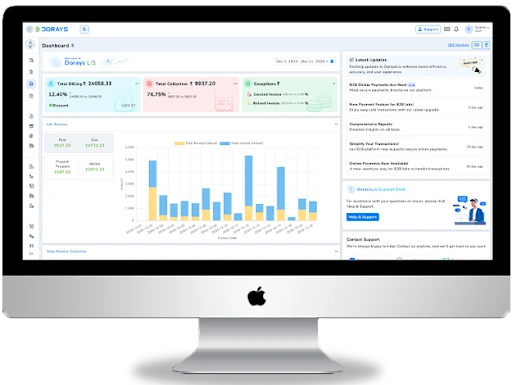Pathology
Modern laboratories operate in a fast paced, high-precision environment where accuracy and efficiency is paramount. Automated Laboratory Information Management Systems (LIMS) were developed to support how labs function. Their capability to automate workflows, repetitive tasks, and minimize human error transformed the workplace automation landscape.
This article shares 10 remarkable automation features of LIMS software that help streamline processes in your lab.
1. Real-Time Capture of Primary Instrument Data
LIMS now come integrated with laboratory devices like microscopes, analyzers and spectrometers which allows for raw information to be captured automatically instantly. Data does not need to be entered manually which increases time-efficiency and accuracy. With automation in data entry, transcription errors are significantly reduced and helps achieve consistent results, which is a prerequisite for reproducibility and scientific integrity.
2. Smart Task Scheduling
With LIMS networked devices, lab employees can ditch the manual task of assigning jobs and allow the software to distribute work as per sstaff availability, priority, and equipment readiness. This will greatly increase resources efficiency in labs and workflows are remained uninterrupted. Automated scheduling applies not only for daily test allocations and equipment bookings, but also helps labs organize and remain productive.
3. Enhanced Organizational Flow
Increments in laboratory automation using a Laboratory Information Management System (LIMS) translates to fewer steps involved in complex processes. The system walks users through steps, keeps track of what needs to be done, and guarantees execution of the plan in set phases. Standardizing workflows goes beyond automating processes. Employees are relieved from non-scientific management tasks and can concentrate on more important scientific activities.
4. Built-in Automation for Compliance
Regulatory requirements must be fulfilled for specific industries such as healthcare, pharmaceuticals, and food hygiene, making them crucial for laboratories. With LIMS, labs get time-stamped data logging, versioning control, and audit trail storage, therefore ensuring that compliance requirements will always be achieved. This allows for avoided fines and thoroughly documented steps taken in a controlled manner without jeopardizing security.
5. Collaborative Work Through Remote Access
Now, personnel can access lab information anywhere using any gadget due to the cloud features of modern LIMS platforms. Whether your work is remote or as a researcher from somewhere across the globe, communication is improved, decisions are made faster, and processes are more dynamic and flexible with the use of these systems.
6. Automated Difficult Calculations
Result interpretation and calculations can not only take procudures a long period of time, they may also be done incorrectly. With LIMS, formulas are already defined and the system performs calculations automatically when the tests are being carried out. This eliminates a significant amount of time wasted and inefficiency, while improving the quality of results and avoiding negative impacts on data analysis.
7. How to Manage Documents and Generate Reports Effortlessly
LIMS software simplifies the documentation process by doing both low level tasks, like report creation, and high level tasks, like formatting and sharing the output certificate and even sample label creation. One click automation saves valuable technician labor and provides uniformity across documents boosting lab professionalism and reliability.
Proper inventory control ensures that reagents, consumables, and lab tools are managed with ease using a LIMS system. The software automates tracking use, notifying when stock levels are low, and tracking expiration dates. Controlled inventory databases further enhance organization leading to faster service while preventing shortage related delays.
8. Keeping Track of Your Inventory
A LIMS keeps record of staff certifications ensuring compliance and lab safety by reminding team members of upcoming training sessions or overdue ones, reducing admin work while keeping staff qualified.
9. End-to-End Tracking of Samples
Every sample comes with a unique barcode to be tracked through every stage of its lifecycle, from the point of intake to its final disposal. The centralized database provided by LIMS enables effortless searching, retrieval, and audit of any particular sample. This significantly minimizes the chances of incorrectly handled specimens, missing ones, or having them misplaced.
10. Final Thoughts
Automation is no longer a luxury—it's a necessity in today’s laboratory environment. LIMS software empowers labs to operate smarter by reducing manual workload, enhancing data integrity, and boosting overall efficiency. Whether you're aiming to scale your lab, improve compliance, or simply reduce repetitive tasks, adopting a robust LIMS system is a powerful move toward long-term success.

